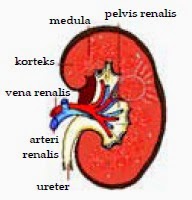Sebutkan Macam Macam Aplikasi Otomasi - Kemajuan dibidang teknologi terutama pada bidang Elektronika dan teknologi ICT sangat pesat dan ini sangat mempengaruhi kemajuan pada proses produksi di industri, ada tuntutan bagi industri yaitu bekerja cepat, optimnal, jumlah produksi banyak dan ketelitian serta akurasi produk sebagai tuntutan kualitas harus dipenuhi. Untuk memnuhi tuntutan
tersebut tidak mungkin dipenuhi apabila masih mengandalkan kemampuan manual dan menggantungkan produksi dari kerja sumber daya manusia yang memiliki keterbatasan ketahanan bekerja dalam waktu yang lama, kerja malam hari, ketelitian dan kesamaan karakteristik hasil produk. Oleh karena itu sistem otomasi elektronika saat ini berkembang sangat pesat baik dari sisi teknologi, konfigurasi, maupun kapasitas dan kemampuannya. Sistem ini sangat universal dan fleksibel sehingga dapat dimanfaatkan oleh industri kecil sampai dengan industri besar di segala bidang dengan cakupan pemakaiannya sangat luas dan beragam.
tersebut tidak mungkin dipenuhi apabila masih mengandalkan kemampuan manual dan menggantungkan produksi dari kerja sumber daya manusia yang memiliki keterbatasan ketahanan bekerja dalam waktu yang lama, kerja malam hari, ketelitian dan kesamaan karakteristik hasil produk. Oleh karena itu sistem otomasi elektronika saat ini berkembang sangat pesat baik dari sisi teknologi, konfigurasi, maupun kapasitas dan kemampuannya. Sistem ini sangat universal dan fleksibel sehingga dapat dimanfaatkan oleh industri kecil sampai dengan industri besar di segala bidang dengan cakupan pemakaiannya sangat luas dan beragam.
Sistem Otomasi Industri dapat diartikan sebagai sistem dengan mekanisme kerja dikendalikan oleh peralatan elektronik (electronic hardware) berdasarkan urutan-urutan perintah dalam bentuk program perangkat lunak (electronic software) yang disimpan di dalam unit memori kontroler elektronik. Dalam membangun sistem otomasi industri antara hardware, software harus menjadi satu kesatuan dan merupakan sekuensial (urutan) pekerjaan atau sering disebut dengan tahapan, yang meliputi pekerjaan tahap pembangunan yaitu suatu industri dipersiapkan sejak awal yang meliputi perencanaan, persiapan, perakitan, instalasi, pemrograman, inspeksi, komisioning. Selanjutnya pekerjaan tahap operasional dimana sistem otomasi industri sudah siap dioperasikan, sehingga perlu pemeliharaan dan jika terjadi kerusakan perlu dilakukan perbaikan.
Oleh karena sistem otomasi industri perkembangan berdasarkan tuntutan kebutuhan sangat tinggi maka sisem otomasi harus senantiasa dikembangkan, sehingga diperlukan pekerjaan tahap pengembangan meliputi perencanaan, persiapan, perakitan, instalasi, pemrograman, inspeksi, komisioning.Otomasi: dapat didefmisikan sebagai teknologi yang berlandaskan pada aplikasi sistem mekanik, elektronik dan komputer. Sering aplikasi otomasi industri dibuat dalam bentuk robot industri, dan robot merupakan komponen utama dalam teknologi otomasi berfungsi sebagai pelaksana pekerjaan yang biasanya dikerjakan oleh buruh, pekerja manusia.
Oleh karena robot merupakan mesin yang dibuat dalam pabrik maka ia memiliki kemampuan dan daya tahan bekerja secara terus-menerus tanpa mengenal lelah. Penempatan robot dalam aplikasi otomasi industri hingga saat ini selalu berkembang, dalam aplikasinya robot industri dibuat mulai dari yang sederhana seperti belt konveyer, mesin pengisi minuman, mesin las otomatis sampai aplikasi robot modern untuk pembuatan mobil, pesawat terbang dan pusat tenaga nuklir. Dengan demikian robot dapat diciptakan untuk menggantikan posisi-posisi pekerja baik dalam bagian produksi dengan program keahlian rendah maupun sebagai pengganti teknisi profesional dengan program keahlian lebih komplek.
Ditinjau dari aplikasinya otomasi dapat dibedakan berdasarkan obyek yang harus diselesaikan, yaitu:
- Tipe tetap yaitu mesin otomatis dibuat khusus untuk menyelesaikan pekerjaan produksi tertentu saja, dan tidak drancang untuk meyelesaikam produk lainnya. Pada umumnya mesin otomasi jenis ini digunakan untuk produksi dalam jumlah banyak dan dibutuhkan waktu produksi yang cepat akan tetapi sangat ekonomis biaya produksinya dengan efisiensi yang cukup tinggi.
- Tipe semi tetap: mesin dibuat untuk memproduksi atau menangani satu macam produk atau tugas, namun dalam beberapa parameter (ukuran, bentuk dan bagian produk) dapat diatur secara terbatas. Investasi awal termasuk cukup tinggi, karena mesin masih bersifat khusus. Robot yang mandiri termasuk dalam kategori ini.
- Tipe fleksibel, mesin dibuat agar dapat digunakan untuk banyak ragam produknya, sistem otomasi lebih bersifat menyeluruh, bagianbagian produk dapat diproduksi pada waktu yang bersamaan. Yang termasuk dalam kategori ini misalnya FMS (Flexible Automation System) dan CIM (Computer Integrated Manufacturing). Robot adalah salah satu pendukung dalam kelompok otomasi ini.
Sistem otomasi tidak bisa lepas dengan sistem pengaturan ataupun sistem pengendalian, dan dalam sistem pengaturan tujuan utamanya adalah mengatur dan mengendalikan nilai output tertentu dari sebuah peralatan sehingga mencapai nilai yang dikehendaki. Peralatan yang dikendalikan disebut dengan Plan, peralatan yang mengatur atau mengendalikan disebut dengan kontroler dan nilai yang ingin dicapai disebut dengan input atau setting point. Besaran yang dikendalikan pada sistem pengaturan diantaranya suhu (temperatur), kecepatan, arus dan tegangan listrik, tekanan dst.
















